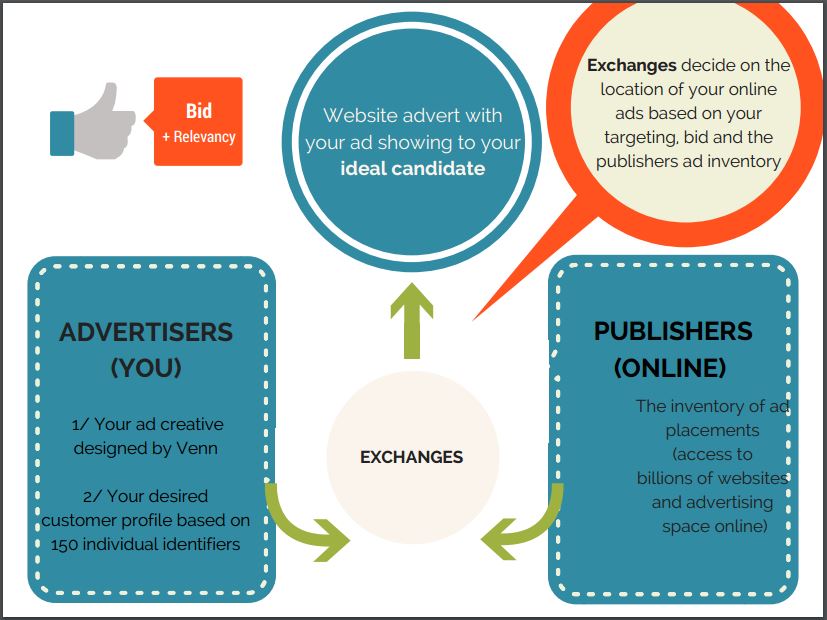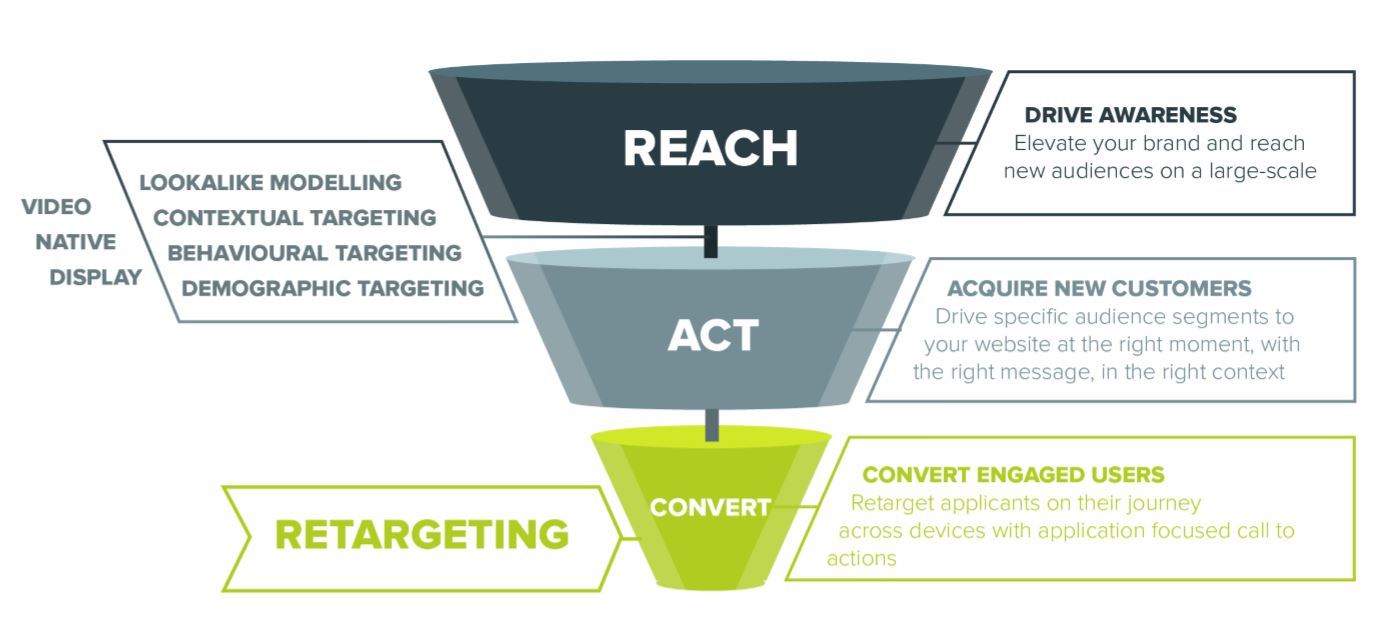Explore our NEW Knowledge Base and Help Desk to find everything you need to attract, engage and convert talent with your Vennture website.
Discover MoreAn Introduction to Programmatic Advertising
24 May, 20173 minutes
The digital landscape is constantly evolving and paid media is leading the charge due to it’s data driven roots, accountability and black and white visibility over results. ‘Big data’ and ‘machine learning’ are buzz words for 2017 and by utilising both of these, businesses are able to leverage the information we now know about you as an individual, your demographics and your online behaviour for their advertising gain. A product you can’t go another day without learning about is programmatic display advertising, and considering we can profile one user with up to 600 individual identifiers, it makes display targeting via the GDN look archaic.
First up, what is display advertising?
If you haven’t heard of display advertising, you will certainly have encountered it. Put simply, it is web advertising via imagery, video or even audio. Previously, display ads have been run manually, meaning users were targeted based upon a few broad criteria and arbitrary characteristics often resulting in a high frequency of activity (i.e. ads following you around the web) and poor delivery.
Now, through real time bidding, machine learning and incredibly precise targeting we can deliver the right ads, to the right person, at the right time using programmatic display advertising.
"Globally, programmatic advertising will grow 31% in 2017 – faster than all other digital channels.”
Ready for the techy bit?
Programmatic media buying includes the use of DSPs, SSPs and DMPs. DSPs, (demand side platforms) which facilitate the process of buying ad inventory on the open market, provide the ability to reach your target audience due to the integration of DMPs (data management platforms). DMPs collect and analyze a substantial amount of cookie data to then allow the marketer to make more informed decisions of whom their target audience may be.
On the publisher side of things, publishers manage their unsold ad inventory through an SSP (supply side platform). An SSP reports attention data such as how long a visitor was on a specific site or how many pages were viewed per visit. SSPs will ultimately be in charge of picking the winning bid and will serve the winning banner ad on the publisher’s site.

So how will this work for your business?
As shown by the model below, display allows us to drive brand awareness and reach by targeting a large pool of potential customers at one time with a creative advert. By utilising the vast amount of 1st and 3rd party data available, we can ensure only relevant users view your ad which increases their chance of conversion. Lookalike modelling, contextual targeting, behavioural targeting and demographic characteristics are all taken into consideration meaning we can actually profile 1 person on up to 600 individual identifiers! The user may click on your ad and if they don’t convert, we can retarget them but not as we typically know retargeting. Dynamic ad creative can be generated so the advert a user see’s the second time is even more specific to their interest and search behaviour.
"Mobile is the driving force behind programmatic and accounts for £3.2 billion in total programmatic display ad spending"

[Image and quotes courtesy of Admedo, one of our display partners]
We will be hosting an event around our programmatic display offering in the very near future, so watch this space for your chance to attend and learn more about the world of display advertising from our Head of Paid Media, Simon Facey.



